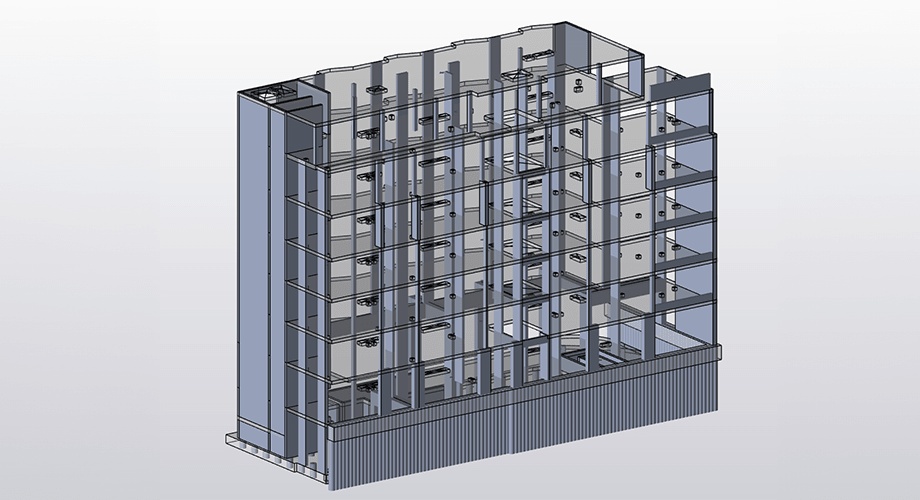Structural engineering in urban spaces with Tekla Structural Designer

When Mason Navarro Pledge was appointed as engineering consultants on the new Stephenson Way student accommodation development, the team turned to Trimble’s multi-material structural design software to provide the streamlined workflows and interoperability required.
Stephenson Way is a proposed new student accommodation development in the heart of London, with a focus on elevating student living. Located near Euston Square tube station, the design is a 72-unit, 8-storey building, featuring a single-storey basement and containing 1,500 cubic metres of concrete. As to be expected, the development faces a congested site footprint, surrounded by existing multi-storey buildings of a similar height.
Mason Navarro Pledge, the engineering consultancy firm, was appointed to provide structural and civil engineering services on the project, taking it from Stage Two to Stage Six / Seven of the RIBA Plan of Works (PoW).

The busy city-centre location presented the team with two key structural challenges: the first, an existing curved vehicular ramp, which provides access to the rear of one of the existing buildings and had to be maintained as part of the new development. The second being complex party wall issues, with neighbouring buildings close to the boundary line on three sides (including one flank wall which had to be retained by the new development) and a highway adjacent to the fourth side.
Mason Navarro Pledge carried out the structural design works within Trimble’s Tekla Structural Designer software.
Speaking about the project, Leo Corney, Structural Engineer, said: “At Mason Navarro Pledge, we’ve been using Tekla Structural Designer for many years. While the software is perhaps predominantly known for its steel capabilities and the interface with Tekla Structures, it is just as valuable for concrete design.
“Personally, I’ve used a variety of design and analysis software packages over my career to date and there are certainly a few features within Tekla Structural Designer that offer enhanced value to my work. For example, it’s easy to modify stiffness properties and isolate individual elements for review. Long-term slab Deflection Analysis is another area that the software exceeds at. In current UK concrete construction, flat slabs are most commonly used because of their geometric flexibility and ease of passage for MEP containment. Flat slabs are usually governed by long-term deflection, so this is where a lot of our time as engineers is spent when it comes to concrete construction. Long-term deflection checks are made more time efficient with the software’s Check Line feature, where we can pre-set limits.
You can also easily model and assess column positions and beam locations within the one software model, cutting out the middleman. This is especially valuable when you’re at the early stages of a project and trailing various column and grid layouts.”
On Stephenson Way, it was the software’s interoperability and streamlined workflow that was perhaps the most beneficial for the team, saving valuable time and resources, as well as aiding coordination between disciplines and software suites.

Leo commented: “The architect supplied us with CAD layouts of the floors, which we were able to import as DXFs directly into Tekla Structural Designer and model the structure in line with the architectural and structural design. This allowed us to accurately alter the model geometry without either using a third-party software (such as Revit) to first model the geometry to the architect's layout and importing that model into the analysis software; or painstakingly measuring out all the gridlines by hand and recreating the model from the architect's drawing.
“Different structural geometry such as column positions, section sizes and slab depths were also tested within the model, and the geometry exported to Revit using the Tekla Structural Designer BIM Integration tool. From this, structural drawings were produced and sent to the architect.
“This seamless and reliable direct data transfer from one software to another is a huge time saver, meaning that we don’t have to duplicate work or manually check for any small changes or problems between different software or model versions. It is a far more efficient workflow.”
The Stephenson Way project is currently being tendered, with construction predicted to commence on site in Q4 2024.
To learn more about Mason Navarro Pledge, please visit mnp.co.uk